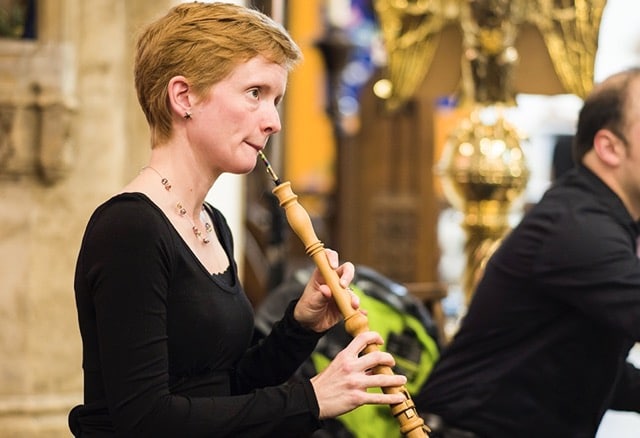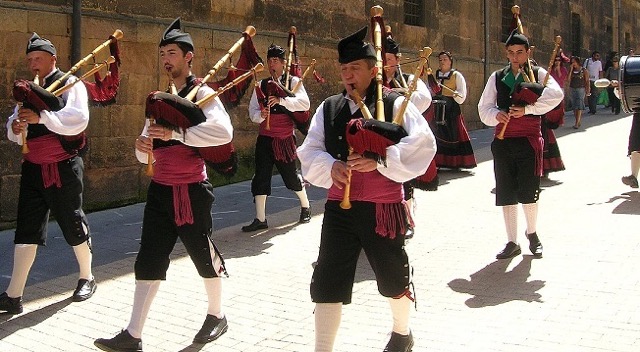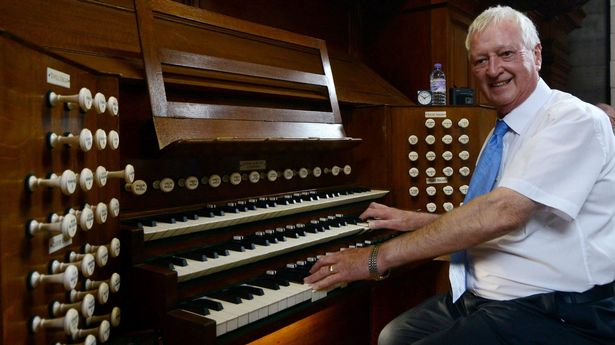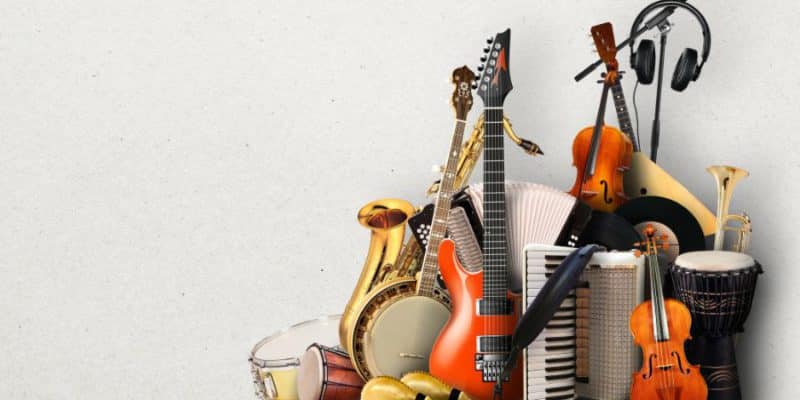Every now and then, a question lingers in every music enthusiast’s mind “What is the hardest instrument to play?” Playing a musical instrument can be a rewarding and fulfilling experience, but it can also be challenging. Some instruments are considered to be more difficult to learn than others.
In this essay, we will explore some of the hardest instruments to learn. We will discuss the reasons why these instruments are considered hard to learn.
Whether you are an aspiring musician or simply curious about the complexities of different instruments, this article will provide insight into the challenges and rewards of learning some of the most difficult instruments.
Table of Contents
Top 9 Hardest Instruments To Play
There is no definitive answer to this question, as it largely depends on an individual’s skill level and experience with playing music. Some people may find certain pieces of music to be more difficult to learn than others, while others may find the same pieces to be relatively easy.
We are going to discuss some of the hardest instruments to learn and you can decide for yourself which is the hardest instrument to learn.
1. Violin

Without a question, the violin is one of the hardest string instrument to play. You’ll need a lot of attention and accuracy to play and master it.
For starters, the violin is the smallest high-pitched string instrument. As a result, it is difficult to keep a precise position when playing.
The violin also lacks frets, which are used to control the player’s fingers on other string instruments. Due to the absence of frets, the fingers must be placed exactly and flawlessly. The actual problem of the violin is maintaining a consistent tone throughout.
Understanding how to play the instrument does not require a substantial effort of a player’s physical and psychological resources; but generating a well-rounded sound with the appropriate loudness, pitch, and tone while retaining the tone’s charm and originality is not intended for the fragile in spirit.
Maintaining good posture is another challenging part of playing the violin. The right hand should be supported under your chin, and the left hand should be free to move up and down the fingerboard.
2. French Horn

As its name suggests, the French horn is thought to have originated in France, which was a major producer of hunting horns. However, it contains bells that are flared and made of brass metal instead of real horns.
Do not, however, believe that this instrument’s beauty makes it simple to play. Indeed, it is one of the hardest instrument to play.
The French horn plays up in the highest amount among all the instruments.
The size and weight of this instrument also make it difficult to play. A long tube makes a large circle in the design. You must hold the instrument by encircling it with your hands.
This hand position, along with the weight of the instrument, makes playing for an extended amount of time agonizing.
Your fingers must also be able to freely touch the buttons, which requires a significant deal of flexibility.
To generate a pleasant sound from the long pipe, you must also master your breathing technique.
These elements contribute to the overall difficulty of playing the French horn.
It is not unusual for orchestras to have a reserve lead horn player who can take over for the primary player if necessary.
As a result, many consider it the hardest instrument to play.
3. Oboe

Although this instrument has a simple name, it is considered one of the hardest instruments to learn. The Oboe is a reed instrument that necessitates a precise mouth position.
The regulated breathing necessary to learn the oboe is regarded to be one of the most challenging parts of any wind instrument.
It, too, employs a double reed to produce music, thus it has all of the challenges associated with not just playing but also creating and maintaining the reeds.
Another challenge is that the air that is forced through the device must be consistent and at the same pressure; otherwise, things become erratic.
As well as with rigorous breathing methods, a new learner of the oboe must know the location and combinations of 45 keys.
The combination of all these makes it one of the hardest instrument to play.
4. Bagpipes

The next one is widely considered one of the hardest instruments to learn. Bagpipes are a type of musical instrument that is often associated with Scottish and Irish folk music. They consist of a bag, a blowpipe, and several pipes. The bag is typically made of animal skin and is held under the musician’s arm.
The musician uses the blowpipe to blow air into the bag, which is then squeezed by the musician’s arm to release the air through the pipes. The pipes, which are played by the musician using their fingers and thumbs, produce the distinctive sound of the bagpipes.
One of the biggest challenges of learning to play the bagpipes is the amount of air that must be blown into the bag. The bag must be continuously squeezed to release the air, the musician must constantly maintain a steady flow of air.
This requires a high level of breath control and can be tiring for the musician, especially when playing for extended periods.
Another challenge of playing the bagpipes is the coordination between the hands and the fingers.
The musician must use their fingers and thumbs to simultaneously play the pipes, while also squeezing the bag with their arm. This requires a high level of dexterity and coordination and can be difficult to master.
In addition to these physical challenges, learning to play the bagpipes also requires a good ear for music.
The musician must be able to accurately reproduce the melodies and rhythms of the music and must be able to tune the pipes to the correct pitch. This can be a difficult skill to develop and can take many years of practice to master.
5. Bassoon

The bassoon is one of the hardest woodwind instruments to learn that is known for its distinctive, deep sound. It is the lowest-pitched member of the woodwind family and is often used to provide the bass line in orchestras and other musical ensembles.
One of the challenges of learning to play the bassoon is its complex system of keys and levers. The bassoon has many more keys and levers than other woodwind instruments; such as the flute or clarinet, and the musician must learn how to use these to produce the desired sounds. This requires a high level of technical skill and precision and can be difficult to master.
In addition to the keys and levers, the bassoon also has a unique playing technique and fingerings. Unlike other woodwind instruments, which are typically played by blowing into a mouthpiece, the bassoon is played by using a double reed, which is placed between the lips.
The musician must learn how to control the airflow and produce a consistent sound using the double reed. This can be a challenging skill to develop and can take many years of practice to master.
Another challenge of playing the bassoon is the need for a good ear for music and the ability to play with precise intonation.
The bassoon is a very expressive instrument, and the musician must be able to accurately reproduce the melodies and rhythms of the music. This requires a keen ear and the ability to play with a high level of accuracy.
As a result, it is perceived as one of the hardest instruments to learn.
6. Harp

The harp doesn’t look so difficult to learn but it is one of the hardest instruments to learn. Learning to play the harp can be a real challenge, especially if you’re not a big fan of hard work and dedication.
For starters, the harp is a pretty big instrument, so you’ll need to develop some serious arm and shoulder muscles if you want to play it for any length of time.
And let’s not even talk about the number of strings on a harp – it’s enough to make your fingers feel like they’re going to fall off!
But the physical challenges of playing the harp are just the tip of the iceberg. You’ll also need to develop a keen ear for music and the ability to play with precise intonation.
This can be tough, especially if you’re used to playing instruments that only have a few strings (like a guitar or a ukulele). Let’s not forget about the sheer amount of practice and dedication that’s required to become proficient at playing the harp. For all these reasons, the harp is considered one of the hardest instruments to learn.
It’s enough to make you want to give up and just stick with the kazoo!
But despite all these challenges, learning to play the harp can be a truly rewarding experience. The unique sound of the harp and the sense of accomplishment that comes from mastering this complex instrument make it all worth it in the end.
7. Piano

Learning to play the piano can be a rewarding and fulfilling experience, but it can also be challenging. The physical aspect of the instrument makes it one of the hardest instruments to learn.
The piano has a large number of keys, and the musician must use their fingers, hands, and arms to play them. This can be tiring, especially for beginners who are not used to the physical demands of playing the piano.
Another challenge of learning to play the piano is the need for a good ear for music and the ability to play with precise timing and intonation. The piano is a very expressive instrument, and the musician must be able to accurately reproduce the melodies and rhythms of the music. This requires a keen ear and the ability to play with a high level of accuracy.
In addition to these physical and musical challenges, learning to play the piano also requires a significant amount of practice and dedication. These are all indications of the piano being one of the hardest instruments to learn.
The piano is not an easy instrument to learn, and it can take many years to become proficient at it. However, for those who are willing to put in the time and effort, the rewards of mastering the piano can be great.
The beautiful sound of the piano and the sense of accomplishment that comes from learning to play it make it a worthwhile pursuit for many musicians.
8. Organ

People believe that playing the piano and the organ shouldn’t differ all that much. After all, they are visually comparable. You press the keys on them to make sounds.
The majority of us are unaware that there are several kinds of musical instruments. The primary function of a piano is as a percussive instrument. The classification of an organ, on the other hand, is that of a woodwind musical instrument.
An organ is similar to the French horn, oboe, flute, and other instruments that make music by using airflow. Which makes it one of the hardest instruments to learn.
Because of this, an organ’s sound is significantly different from a piano’s.
The organ has many different keyboards, pedals, and stops, and the musician must use all of these to produce the desired sound. This can be overwhelming for beginners, who may find it difficult to keep track of all the different parts of the organ.
Another challenge of learning to play the organ is the need for a good ear for music and the ability to play with precise timing and intonation.
The organ is a very expressive instrument, and the musician must be able to accurately reproduce the melodies and rhythms of the music. This requires a keen ear and the ability to play with a high level of accuracy.
9. Nyckelharpa

Just like its name, it is one of the hardest instruments to learn. Despite being a relatively uncommon instrument, performing it well takes serious practice. The instrument is first slung over your neck using a strap, exactly like a guitar.
The keys themselves present a challenge. The musician might need to shift their fingers from string to string since the left hand must manage seven strings and more than one string is needed to play a tone.
For the majority of novices, positioning the left hand, which plays the keys, is equally challenging. It might be challenging to hold your position when playing.
You must position your left hand such that your fingers are slightly curled and touching the keys with their tips.
The thumb should easily swivel down the neck and bend beneath.
Final Words
That rounds up our list of hardest instruments to learn. Learning to play any musical instrument requires a great deal of patience and regular practice. With the right kind of determination and guidance you can become a true master of any kind of musical instrument.
Let us know in the comment which is the hardest instrument to learn on your opinion.
Check also:















![The Top 12 Best One Piece Arcs [Ranked]](https://calibbr.com/wp-content/uploads/2022/06/The-Top-12-Best-One-Piece-Arcs-Ranked-180x180.jpeg)